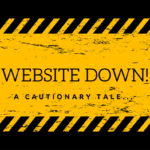We’ve been delighted to be supporting Beat The CyberBully again this month to help support and educate children, parents and teachers about online safety and digital wellbeing.
For anyone unfamiliar with the initiative, Beat The CyberBully aims to promote safe, responsible and inspiring online communications for children and young people, and to bridge the digital knowledge gap for teachers, parents and carers, and is run here in the Middle East by my dear friend Barry Lee Cummings.
This morning, we’ve launched Beat The CyberBully’s mobile app to media in the region, and in talking to press about the virtues of the programme and the importance of cyber safety and security, it had us thinking about some of the basic elements of safe social media and whether we might perhaps all need a refresher:
1. Don’t add people you don’t know
It seems obvious, but try to add only people you have met and are familiar with, particularly if you are sharing lots of personal content on your channels. Double check the profiles before you accept any requests to be sure that they are the genuine accounts of the people they are claiming to be – does the account have photos/videos, posts and background information? If not, and it’s only a name on a blank page, don’t accept.
2. Report any suspicious activity or offensive/inappropriate content
If you come across any posts, images, videos or comments that are offensive, or which break the platform’s rules of engagement, don’t be afraid to report it. Sure it’s easy enough to scroll on by, or to delete or remove a post/person, but that won’t stop them from posting again, and perhaps the next person viewing the post will be more vulnerable than you are. We all need to play our part in keeping the internet safe.
3. Don’t be afraid to block people
Following on from the previous point, it’s very easy to block (and report) accounts that are offensive and/or fake, as well as those who troll and/or harass. We don’t recommend blocking people from company pages just because you don’t like their content, or because they write negative responses (you should be able to manage these posts with effective issues management and crisis comms), but if the person is regularly posting offensive or inappropriate content, or unjustified negativity, then it may be necessary.
4. Check your privacy settings
How accessible is your content? Are you accounts open to the world, or restricted to your contacts? When you share photos, do these have the same settings, or are your albums open to anyone? When you tag people in posts or photos, is this content available to only your contacts, or their contacts as well? Make sure you know how open your accounts are, and think about restricting visibility of your profile information and photos, for example, to those whom you know personally.
5. Have a strong password
Take the time to make your passwords strong, long gone are the days when it was ok to use variations of your name or date of birth. Try to make it more random than the standard security answers (mother’s maiden name, first pet, father’s middle name, etc), details that people would not know about you, and are not listed anywhere else. Use a mix of higher and lower case, as well as numbers and symbols if you can. Then make sure that your passwords are not the same for all of your social media accounts (or anything else you log into online) as this then makes them all vulnerable.
6. Don’t share personal details publicly
Be careful not to divulge where you live, your mobile number, daily routine, your children’s school, etc, particularly if you have open profiles as this opens you up to additional off-line risks. If posting pictures of your children starting school, cover/blur the logos on the uniforms, don’t share the dates of when you are going on holiday if your profile is open and your address can be determined, as you are then at risk of theft during your absence. These details seem like common sense, but can easily be overlooked on social media when we are lulled into a sense of talking to our friends. To be on the safe side, keep your profiles private with limited contacts, or don’t any share personal details.
These are only six items from a potentially endless list of ways to protect yourself and your families on social media. Hopefully as our work continues with Beat The CyberBully, we’ll be able to share more tips and advice from the experts themselves, but in the meantime, if you have any questions or would like to know more, please do drop me a line: sam@footstepcommunications.com





